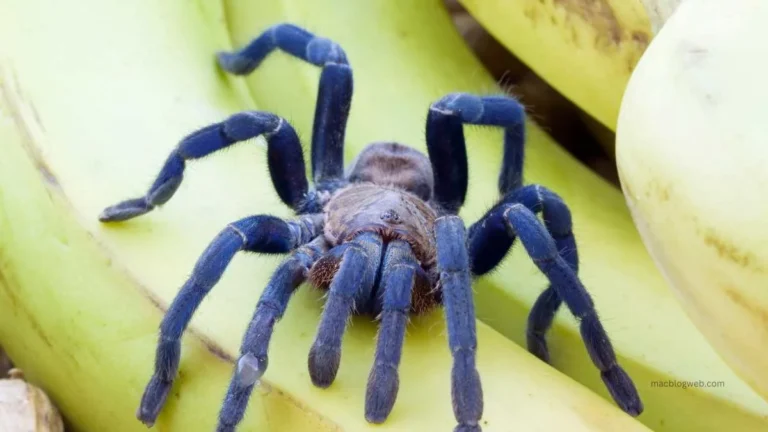The Cobalt Blue Tarantula, scientifically known as Cyriopagopus lividus, is a species that captures the imagination of both arachnid enthusiasts and the general public alike due to its striking blue coloration and secretive nature. Native to the rainforests of Myanmar and parts of Thailand, this tarantula is a fascinating example of nature’s complexity and beauty. This comprehensive article explores the biology, behavior, habitat, and other intriguing aspects of the Cobalt Blue Tarantula.
Taxonomic Classification and Description
The Cobalt Blue Tarantula belongs to the family Theraphosidae and was initially described as Haplopelma lividum. It is a medium-sized tarantula with a leg span typically reaching around 13 cm (5 inches). The most distinctive feature of this species is its brilliant blue legs, which contrast sharply with its light gray prosoma (head region) and opisthosoma (abdomen). The abdomen may display darker gray chevrons, adding to its dramatic appearance.
Sexual Dimorphism and Reproduction
Sexual dimorphism becomes apparent in the Cobalt Blue Tarantula only at the ultimate molt of the males. Before this final molt, males and females appear similar. Post-molt, males exhibit a lighter tan or bronze coloration and become noticeably leggier than females. They also develop a palpal bulb on the pedipalps and tibial apophyses, which are used during mating.
Females are larger than males and have a significantly longer lifespan, which is typical of many tarantula species. The mating process involves the male cautiously approaching the female, using his tibial hooks to hold the female’s fangs and prevent her from attacking him while he transfers his sperm to her.
Behavior and Lifestyle
The Cobalt Blue Tarantula is primarily a fossorial species, meaning it spends most of its life within burrows it constructs itself. These burrows are deep and complex, providing protection from predators and extreme environmental conditions. The tarantula’s burrowing behavior is particularly adapted to the humid and warm habitats of the rainforest understory.
This species is known for its shy and reclusive nature, only leaving its burrow to hunt or find a mate. It feeds on a variety of insects and smaller vertebrates, which it subdues with its venom. Despite its secretive lifestyle, when threatened, the Cobalt Blue Tarantula can display considerable aggression.
Venom Composition and Impact
While the venom of the Cobalt Blue Tarantula is not lethal to humans, it can cause significant pain and discomfort. Research indicates that the venom contains glutamic acid at a concentration of 0.97%. It also includes histamine (0.14%) and adenosine (0.10%), with trace amounts of the polyamine spermine (0.002%). These compounds contribute to the venom’s effectiveness in subduing prey but can result in painful reactions if humans are bitten.
Conservation Status
As of now, the Cobalt Blue Tarantula does not have a specific conservation status under the IUCN Red List. However, like many species native to Southeast Asia, it faces threats from habitat destruction due to logging and agricultural expansion. The pet trade also poses a significant threat, as these visually striking tarantulas are highly sought after by collectors and enthusiasts, leading to overcollection from the wild.
In Captivity
In the exotic pet trade, the Cobalt Blue Tarantula is a popular choice due to its dramatic coloring and the challenge it presents to keepers. They require careful husbandry to mimic their natural humid and warm environment, with adequate burrowing substrate to satisfy their digging instincts. Potential keepers must be prepared for their defensive nature and potential for painful bites, making them suitable only for experienced tarantula enthusiasts.
Conclusion: Cobalt blue tarantula
The Cobalt Blue Tarantula remains one of the most enigmatic and beautiful tarantulas in the world. Its striking appearance, interesting behaviors, and the challenges it presents in both the wild and captivity continue to endear it to scientists and hobbyists alike. Preserving its natural habitat and ensuring sustainable practices in the pet trade are essential to the survival of this remarkable species, allowing future generations to continue to marvel at this jewel of the rainforest.
